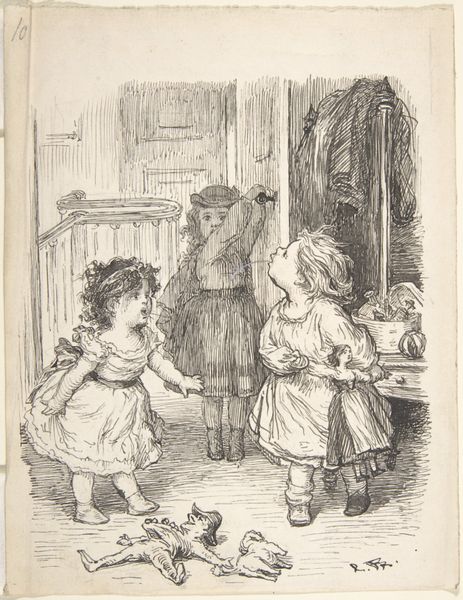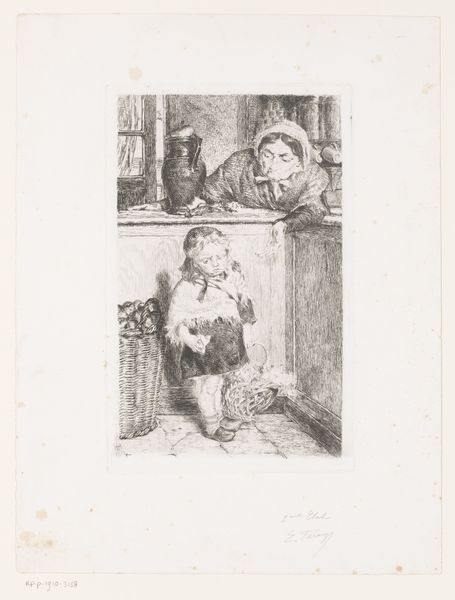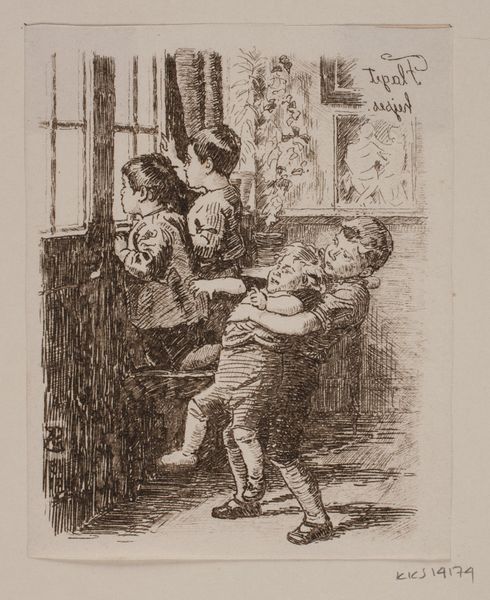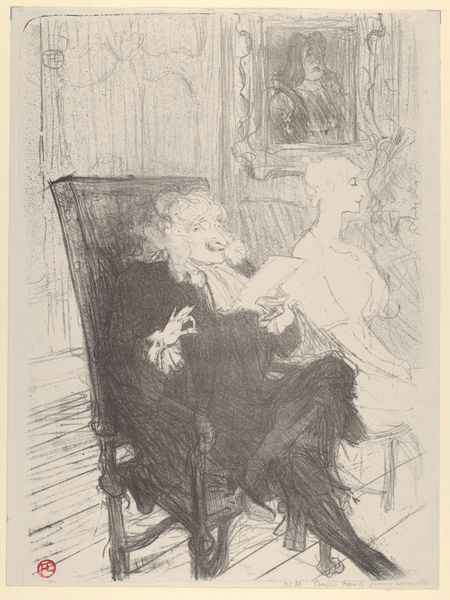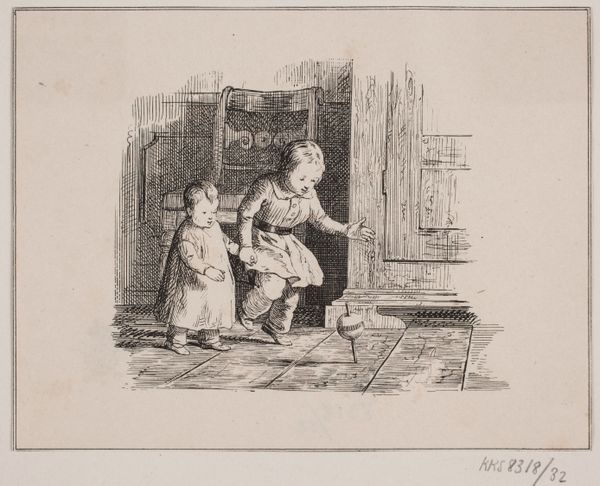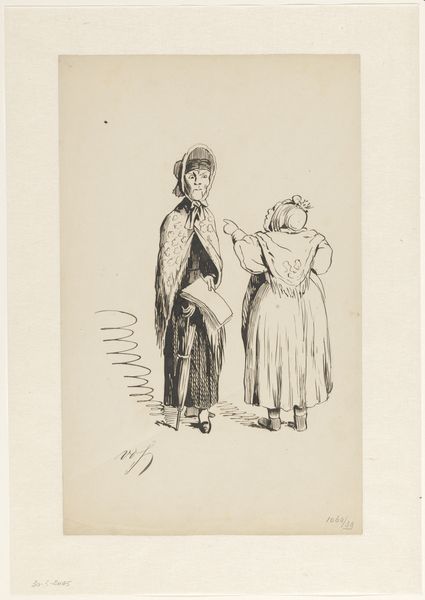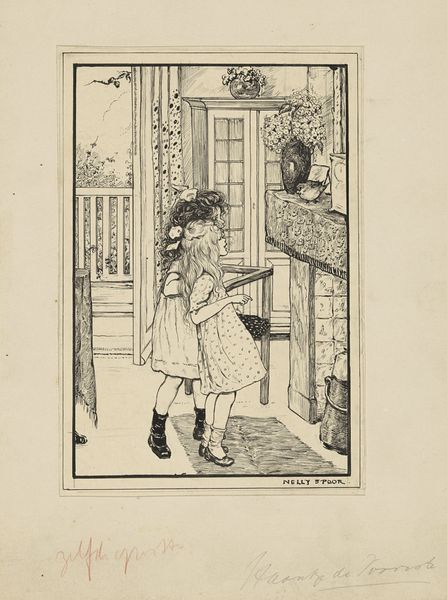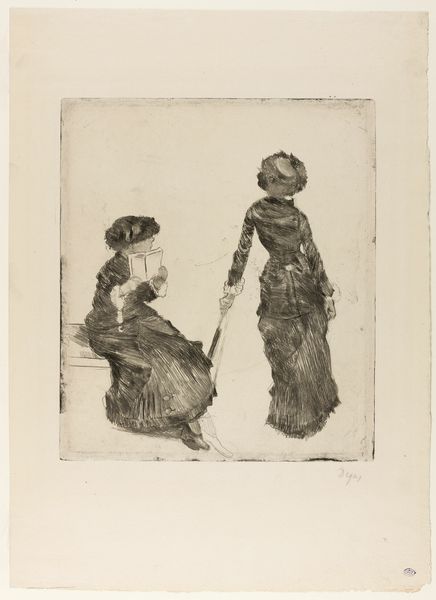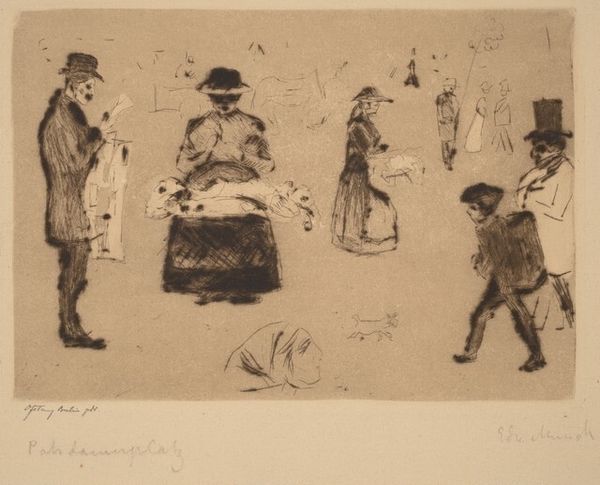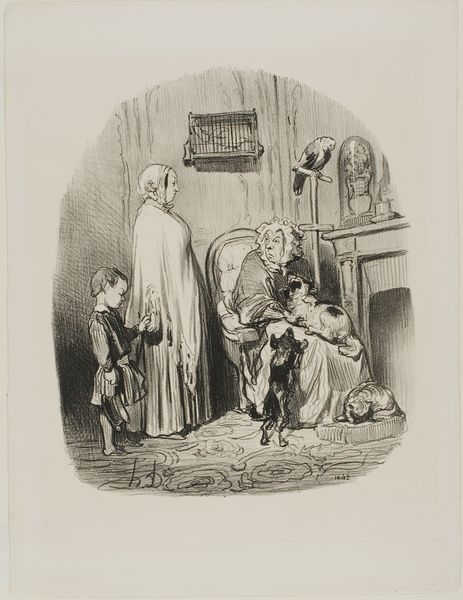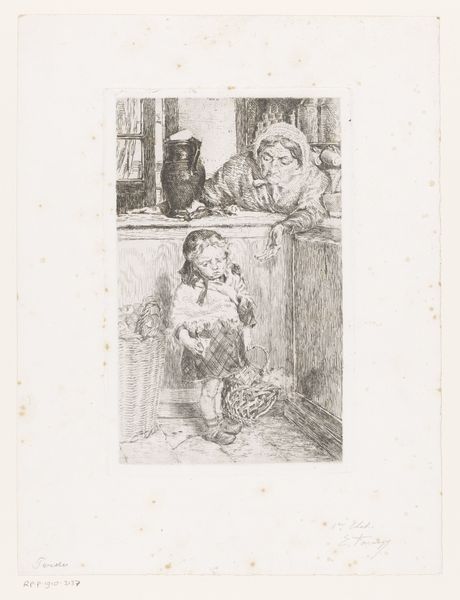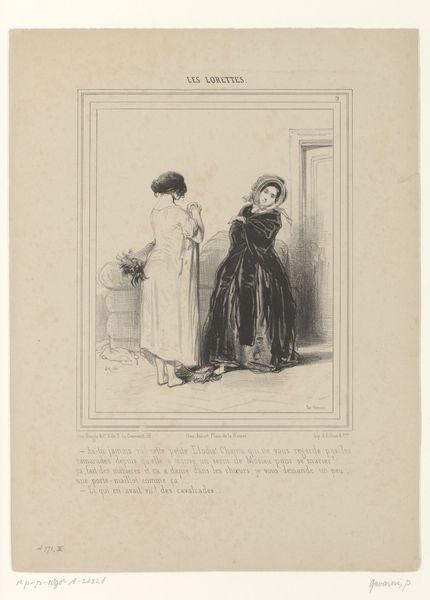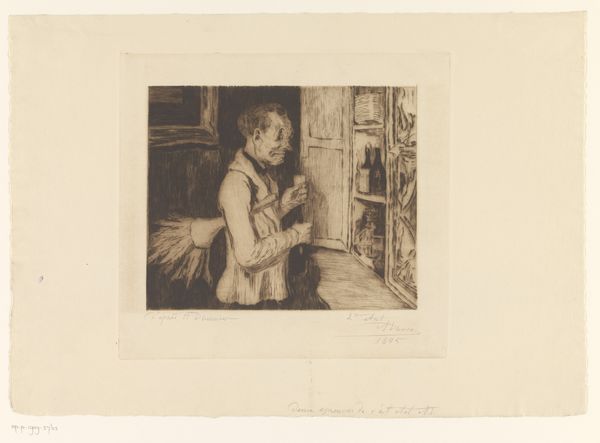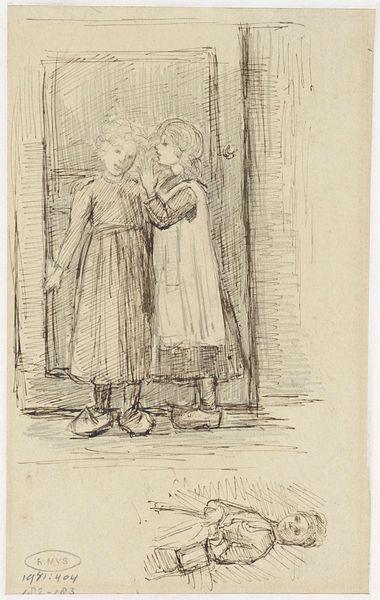
print, etching
#
portrait
# print
#
etching
#
figuration
#
expressionism
#
portrait drawing
Copyright: National Gallery of Art: CC0 1.0
Editor: This is Edvard Munch's "Two Children," an etching from 1902. It feels so… vulnerable, seeing these two children, rendered with such stark lines. There’s a fragility to the image. What do you see in this piece, looking at it from an iconographic perspective? Curator: It’s striking how Munch, associated with anxiety and existential themes, here depicts childhood. But is it simple innocence? Note how their clasped hands obscure their faces. It speaks to a suppression, a hidden element. What do the hands covering their faces evoke for you? Think about gestures and hidden emotion. Editor: Almost like they're hiding from something or trying to block something out, but I’m unsure what that could be. Is the little toy somehow symbolic, or am I looking too deeply into it? Curator: That small toy pulled between them could signify a fractured relationship or a connection in danger of breaking. Think of children's games—tug of war, broken dolls. It echoes the theme of loss common in Munch’s works, which were always colored by personal tragedy. It isn’t just about childhood; it's about its inherent precarity. Munch's childhood memories deeply affected him, for instance his mother's death due to tuberculosis. Editor: I see it now; the image is more nuanced than I initially perceived. Childhood and fragility coexist with precarity. Curator: Indeed. It reminds us how even seemingly simple images carry layers of meaning, reflecting personal histories and broader cultural anxieties. The more you consider the cultural context and Munch’s influences, the more this seemingly simple scene deepens. Editor: I appreciate how you’ve connected personal experience, broader anxieties and iconographic interpretation. Curator: Understanding visual symbols unlocks these hidden chambers, offering new interpretations to the artworks.
Comments
No comments
Be the first to comment and join the conversation on the ultimate creative platform.
